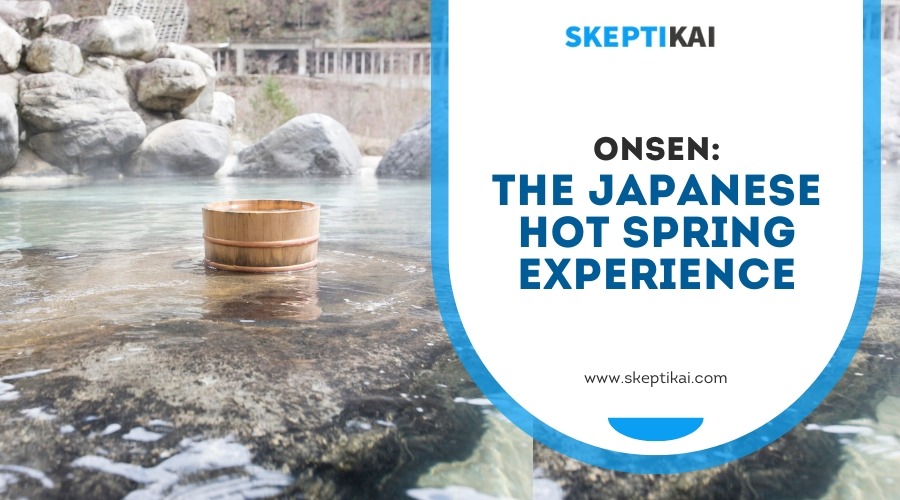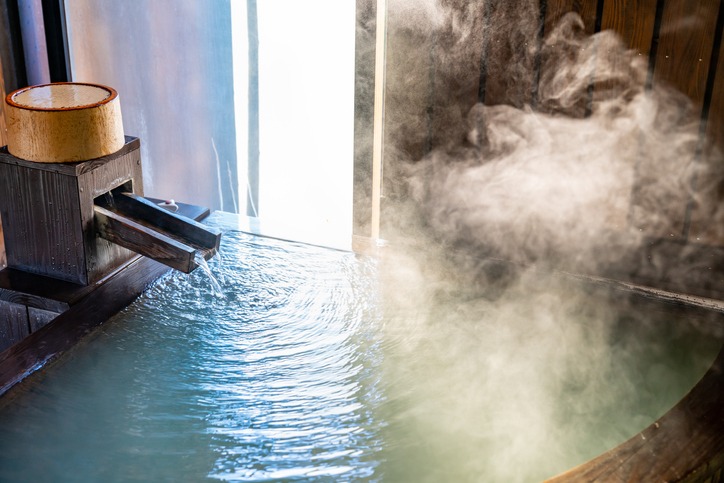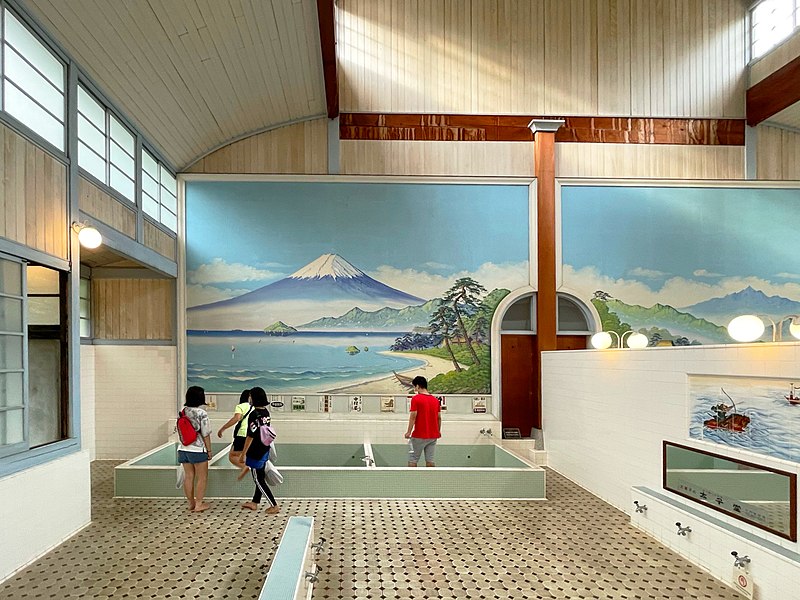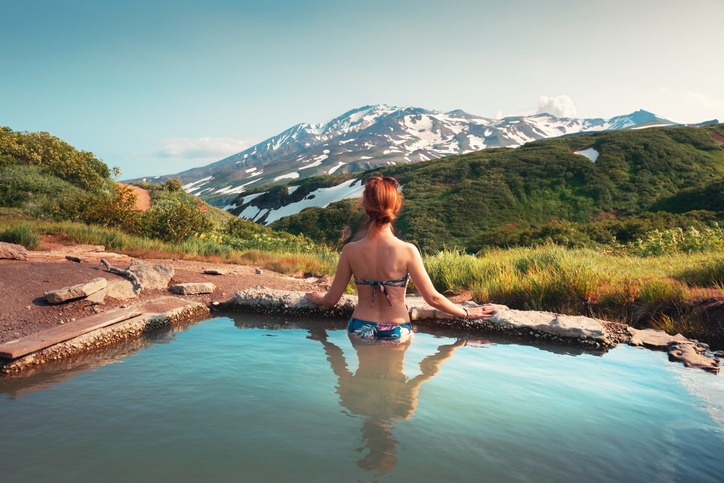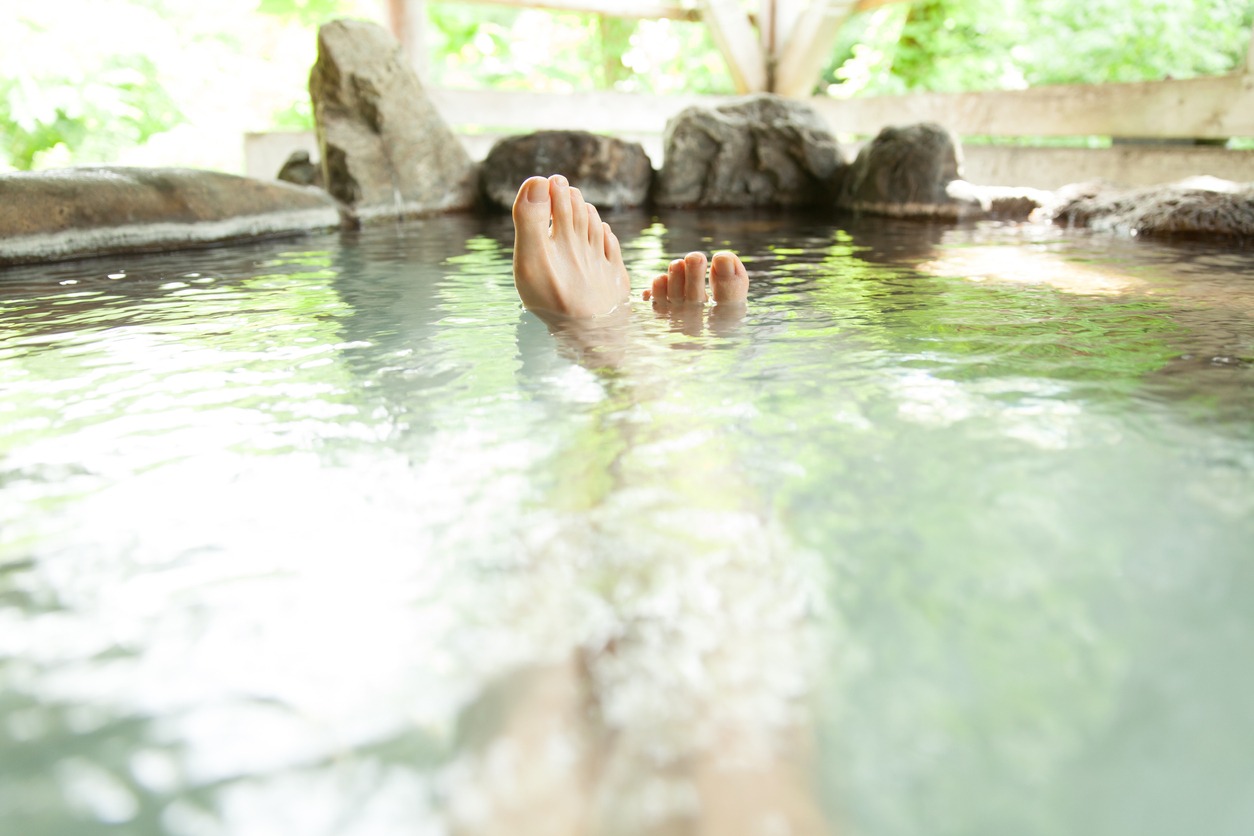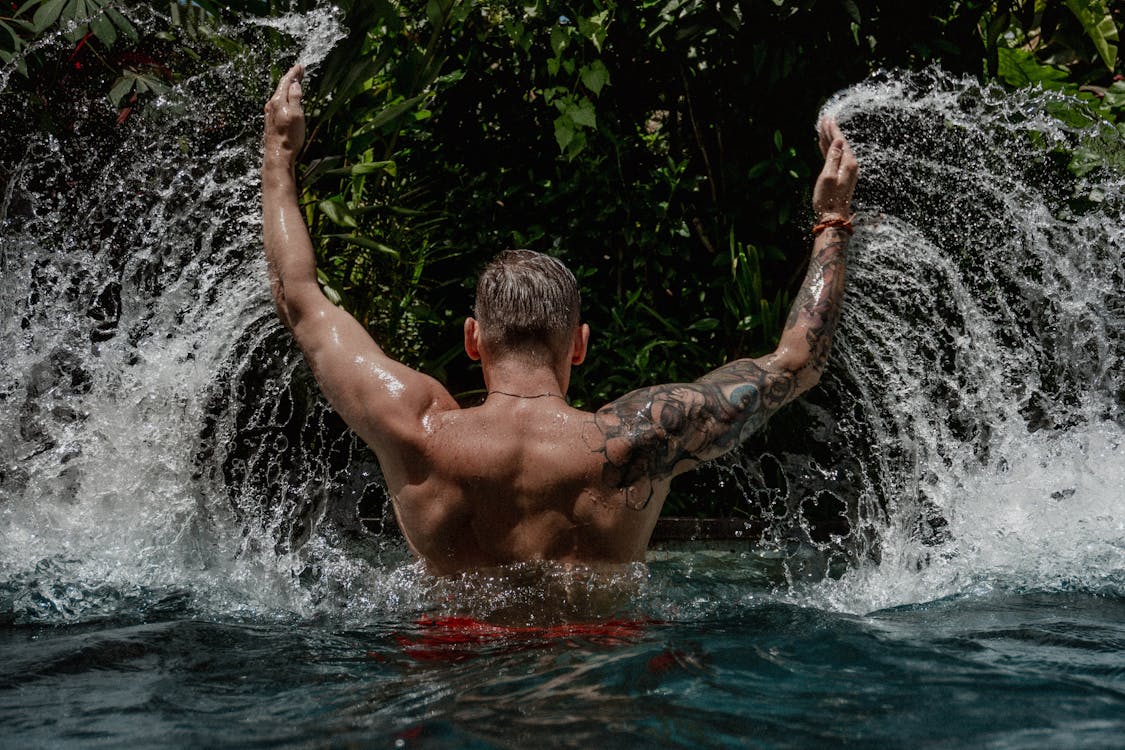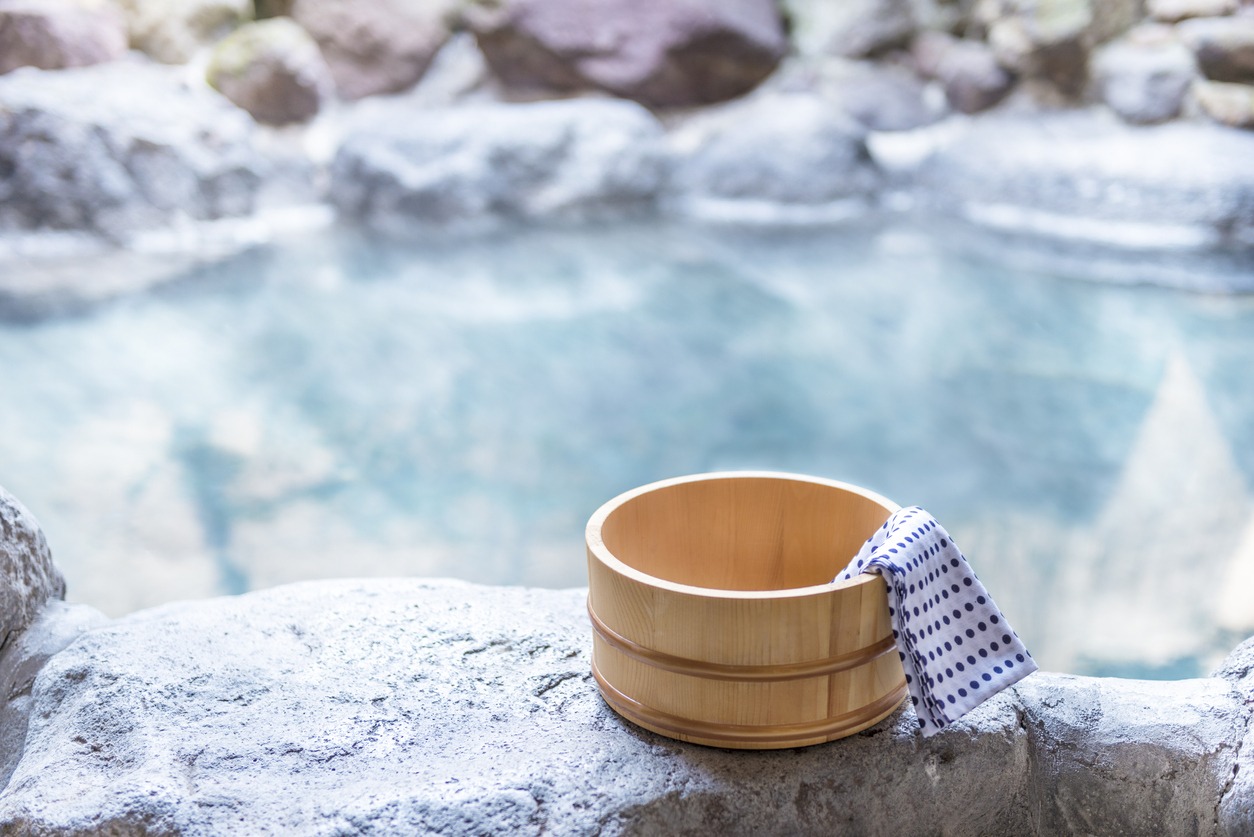Imagine stepping into the warm, mineral-rich waters of an onsen in Hakone, surrounded by serene natural beauty. It’s more than just a bath; it’s a deep dive into Japanese culture and tradition. As you plan your visit, you’ll find there’s a specific way to approach these communal baths, from pre-bath etiquette to understanding the significance behind the experience.
But before you dip your toes into these healing waters, there’s a lot you should know to fully appreciate the onsen experience. Let’s explore how these traditional hot springs can offer you more than just relaxation, touching on aspects you might not have considered.
Understanding Onsen
To truly appreciate Japan’s rich bathing culture, it’s essential to understand what onsen are and how they differ from standard bathhouses. Onsen, or Japanese hot springs, aren’t just any public bath. They’re a cornerstone of Japanese traditional wellness, offering a unique onsen experience that involves soaking in mineral-rich hot spring water. With over 2,900 onsen resorts across Japan, you’re never far from the chance to immerse yourself in these natural pools.
The health benefits of bathing in onsen are well-documented, ranging from soothing muscle pain to improving skin health. But before you can dip your toes into these therapeutic waters, there’s an important ritual to follow. Upon entering, you’ll find a changing room where you’re expected to strip down, leaving your clothes and inhibitions behind. Yes, that means getting naked in front of others, which might be daunting but is a fundamental part of the onsen experience.
Understanding onsen symbols is key to ensuring you’re entering a genuine hot spring. Look for drapes or signs at the entrance, which indicate you’re about to step into an authentic onsen, not just any public bath. This distinction is crucial in experiencing the true essence of Japanese bathing culture.
Onsen Vs. Sento
Understanding the differences between onsen and sento can enhance your Japanese bathing experience, ensuring you choose the right spot for relaxation. Onsen and sento, while both offering the serenity of Japanese public baths, have distinct characteristics that cater to different preferences.
- Onsen are natural hot water baths, celebrated for their mineral-rich properties that are believed to have healing benefits. These are the quintessence of the Japanese onsen experience, tapping into the natural hot water sources that Japan is famed for.
- Sento, on the other hand, are public hot baths that don’t utilize natural spring water. They offer a more accessible option for those in urban areas where natural hot springs are scarce.
- The Nippon Onsen Research Institute highlights over 2,900 onsen hot springs resorts across Japan, indicating the vast options available for those seeking the authentic onsen experience.
- Symbols and drapes at the entrance of these facilities play a crucial role in distinguishing between the two, aiding visitors in making an informed choice.
Whether you’re after the mineral-rich embrace of an onsen or the communal warmth of a sento, understanding these differences ensures you’re well-prepared for an authentic and enjoyable Japanese bathing experience.
Preparing for Your Visit
Having explored the differences between onsen and sento, let’s now focus on how you can best prepare for your visit to ensure a seamless and enjoyable experience. Preparing for a hot spring bath in Japan is as much about understanding the culture as it’s about following the rules. Before stepping into the changing room, know that you’ll need to embrace being naked. It’s a fundamental part of the experience, deeply rooted in Japanese bath culture.
Make sure you’re ready to leave your shoes, along with any luggage, in designated areas. Most onsens provide lockers for your belongings, ensuring that the changing room remains clutter-free. Remember, the etiquette extends to how you handle yourself in these spaces—disruptive behaviors are a no-no.
Another key preparation step involves the pre-bath wash. It’s customary to cleanse yourself thoroughly before entering the onsen, highlighting the communal respect for cleanliness. And while you’re navigating your way, keep an eye out for symbols that help differentiate the onsen experience from a sento, ensuring you’re in the right place for the authentic hot spring bath you’re seeking. Don’t forget to bring a small towel, but remember, it’s more about etiquette than coverage.
Bathing Etiquette
Diving into the heart of onsen culture, it’s crucial you’re familiar with the bathing etiquette to ensure a serene experience for yourself and others. Immersing in a hot spring is more than just a relaxing dip; it’s a revered aspect of Japanese culture that demands respect and mindfulness. By adhering to proper etiquette, you contribute to a respectful and tranquil environment that embodies the spirit of the onsen bath.
Here’s a concise guide to ensure you’re well-prepared:
- Wash thoroughly before entering the onsen to maintain the cleanliness of the communal hot spring water.
- Use a small towel for modesty while walking around but remember, it should never touch the onsen water. Place it on your head or at the side when soaking.
- Soak quietly without splashing or swimming, to preserve the tranquil atmosphere and respect the personal space of others.
- Wipe off excess water with your towel before leaving the bath area, to keep the surroundings clean for the next person.
Following these simple steps ensures everyone can enjoy the unique experience of an onsen bath, fostering a respectful and serene environment that’s integral to Japanese culture.
After the Bath
Once you’ve emerged from the soothing embrace of the onsen waters, it’s time to focus on the post-bath practices that honor the shared space and cultural traditions.
To start, it’s crucial you dry off completely before stepping out of the bath area. This practice isn’t just about personal cleanliness; it respects the clean environment everyone shares. Remember, the onsen isn’t a place for grooming—shaving or plucking in these communal areas goes against the grain of onsen etiquette.
Also, while soaking might’ve you craving a snack or a drink, save the food and alcohol for later. Bringing them into the onsen area disrupts the tranquil atmosphere meant for relaxation and reflection.
Speaking of reflection, part of the post-onsen ritual involves ensuring you leave no trace behind. That means properly disposing of used towels and making sure you’ve cleaned up after yourself. This attention to hygiene not only respects the next visitor but also upholds the onsen’s pristine condition.
Tattoo Policies
If you have tattoos, it’s crucial to understand and respect the specific policies onsens have regarding body ink to ensure a seamless bathing experience. Navigating the hot spring landscape in Japan can be a bit tricky due to the various tattoo policies that reflect traditional restrictions within Japanese culture. However, with a bit of preparation and respect for onsen rules, you can enjoy the tranquil experience onsens offer.
Here are some important points to consider regarding tattoo policies in onsens:
- Inquire in Advance: Always check the onsen’s tattoo policies before your visit to avoid any unwelcome surprises.
- Private Onsen Options: Some facilities offer private onsen experiences that are more lenient towards tattoos, providing a solution for those concerned about privacy or rejection.
- Understanding Tradition: Recognize that many onsens adhere to traditional views associating tattoos with negative connotations. Respecting these views is part of embracing Japanese culture.
- Increasing Acceptance: While traditional restrictions exist, there’s a growing acceptance in some onsens, reflecting changes in societal attitudes towards tattoos.
Famous Onsen Regions
Understanding the tattoo policies at onsens prepares you for a more enjoyable experience, and knowing about famous onsen regions can enhance your trip even further. Japan is home to many renowned hot spring towns, each offering unique qualities that cater to different preferences.
Here’s a quick guide to help you choose your next onsen destination:
| Onsen Region | Special Features |
|---|---|
| Kusatsu Onsen | Large number of natural hot springs with acidic quality |
| Gero Onsen | Known for its alkaline simple spring quality |
| Beppu Hachiyu Onsen | Largest number of sources and springs with easy access |
| Dogo Onsen | One of the three ancient hot springs, featured in Bochan |
| Hakone Onsen | Leading hot spring town with 17 springs to explore |
Kusatsu Onsen in Gunma boasts an array of natural hot springs, making it a top pick for those seeking therapeutic waters. Gero Onsen in Gifu is celebrated for its alkaline simple springs, ideal for a soothing soak. Beppu Hachiyu Onsen in Oita offers unparalleled variety with the highest number of sources in Japan. Dogo Onsen in Ehime is steeped in history, providing a glimpse into ancient Japanese culture. Lastly, Hakone Onsen in Kanagawa is a must-visit for anyone wanting to explore a quintessential hot spring town.
Onsen Tours
Exploring Japan’s renowned hot springs can be both enriching and effortless with onsen tours, offering you guided access to a variety of traditional bathing experiences. These tours are a gateway to understanding not just the allure of soaking in geothermally heated waters, but also the deep-rooted culture that surrounds onsen in Japan.
Here’s why onsen tours can elevate your hot spring experience:
- Guided experiences provide a structured exploration of Japan’s famous onsen areas like Beppu, Hakone, and Noboribetsu, ensuring you don’t miss out on the best each has to offer.
- You’ll learn about onsen etiquette and cultural practices, crucial for respecting Japanese traditions and enhancing your immersion into the local way of life.
- Guides share insights on the benefits of onsen bathing, from relaxation to health improvements, and the history behind Japan’s love affair with hot springs.
- Onsen tours offer access to a variety of onsen types, including outdoor baths and private onsens, allowing you to sample a wide range of experiences.
Embrace the opportunity to dive deep into Japanese culture, etiquette, and the rich history of onsen through these carefully curated tours.
Cultural Significance
After touring Japan’s famous onsen with guided experiences, it’s crucial to grasp the cultural significance these hot springs hold in Japanese society. Onsen aren’t just places for bathing; they’re steeped in centuries of tradition, deeply intertwined with Japanese culture from ancient times. These hot springs serve as sacred places for both physical and spiritual cleansing, rooted in purification rituals and relaxation traditions that have been passed down through generations.
| Aspect of Onsen Culture | Description |
|---|---|
| Purification Rituals | Engaging in onsen bathing rituals is a form of spiritual cleansing, deeply embedded in Japanese tradition. |
| Relaxation Traditions | Onsen serve as a retreat to promote well-being and relaxation, away from the hustle of daily life. |
| Sacred Places | These hot springs are considered sacred, offering a space for physical and spiritual healing. |
| Community Bonds | Visiting an onsen is a communal activity that strengthens ties and fosters a sense of belonging. |
Conclusion
Embarking on an onsen journey in Japan is more than just a dip in hot springs; it’s embracing a centuries-old tradition that rejuvenates both body and mind. Remember to prepare, respect the bathing etiquette, and understand the tattoo policies before you soak in these healing waters. Whether you’re exploring famous onsen regions or partaking in guided tours, the experience promises relaxation and a deep connection to Japanese culture.
Dive in, unwind, and let the onsen’s magic work its wonders on you.
